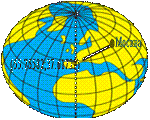Experiments to restore HWM from art reproductions on paper carriers
M.V. Smirnov |
Experiments have been performed on embedding and restoring digital Fourier holograms of hidden watermarks (HWM) into ordinary paper carriers with the help of standard office equipment. As HWM containers, art reproductions of masterpieces of Russian and Soviet art school. Paper sheets were A4 sheets of paper "KYM LUX CLASSIC" *). The device for printing is a HP LaserJet 1022n desktop laser printer, a Mustek Be @ rPaw 2448 flatbed scanner with an optical resolution of 1200 x 2400 dpi. Embedding was carried out in color and halftone pictures-containers.
The methodology and theoretical aspects are set forth in the works "A Holographic Approach to Embedding Hidden Watermarks in Photography" [1-5]. In this paper presents the results of experiments with paper carriers in the "print-scan" image transmission system [6]. The main conclusion of the holographic approach: embedding a watermark in the image spectrum, is equivalent to embedding a watermark hologram in an image .
& nbsp;"Print-scan" is a data transfer path that includes printing images on paper, scanning a printed image, digitally converting and compressing (for example, in JPEG format). Images - containers were art reproductions with a resolution of 300 dpi. & copy; and test barcode were used as hidden watermarks, which were designed as binary pictures with the size 32x32 and 96x96 pixels, respectively.

|
Fig. 1. Original color reproduction - container

|
Fig. 2. The image of the container with the HWM "barcode" after printing and scanning. The sequence of the printing and registration procedures is the impact of the transmission path on the container with HWM. The transmission path consists of a paper carrier and a photographic recorder. Both elements can be described by the frequency-contrast characteristic (MTF, or MTF) and noise power.

|
Fig. 3. The enlarged fragment (200%) of the container image (fig.2) with SVZ after printing and scanning

|
Fig. 4. Restored hologram HWM in the console application software "Holographic Watermarking" (Borland C++)

|
Fig. 5a: Variations of HWM reconstruction in the correction of scale distortions and arbitrary selection of the processing window in a container image with a hologram in Fig.2. Fig.5b: Additive accumulation of random samples provides an increase in the signal-to-noise ratio.

|
Fig. 6. The image is a container (fig2.) With a "correct" halftone histogram. The greatest distortion of HWM is due to arbitrary change in scale and angle of rotation during photographic registration. In this sense, the flatbed scanner is the ideal. However, with flatbed scanning, the histogram of halftones can be shifted to the dark or light side. The latter leads to the hologram part of the hologram and as a consequence to the deterioration of the quality of the HWM recovery.
*) Paper for inkjet and laser printers, white CIE 150 (ISO / DIS 11475), density 80g / m2. 500 sheets in a pack.
References:
- Смирнов М.В. Голографический подход к встраиванию скрытых водяных знаков в фотографии - Оптический журнал, том.72, №6, 2005 (rus)
- M.V. Smirnov Holographic approach to embedding hidden watermarks in a photographic image - Journal of Optical Technology Vol. 72, Issue 6, pp. 464-468 (2005)
- Смирнов М.В. Analog protection of photo media in electronic documents - Abstracts of the International Scientific and Practical Seminar "Integrated Safety Systems and Physical Protection ", St. Petersburg, 2013
- Смирнов М.В. Modeling and visualization of Fourier, Fresnel, Hadamard holograms
- Смирнов М.В. The results of experiments of embedding hidden watermarks in photographic images on paper and plastic basis
- Keskinarkaus, Anja, Digital watermarking techniques for printed images.[PDF]. 28 Feb. 2013 г.
- Experiment on embedding HWM in the form of a binary code. The process of "print-cam".[HTML]
- Presentation DigiMarc 2005: Digital Watermarking Solution
- Smirnov M.V. Multiplication of a digital hologram as a way to increase the signal-to-noise ratio, announced IBMdevoloperWorks etc.


